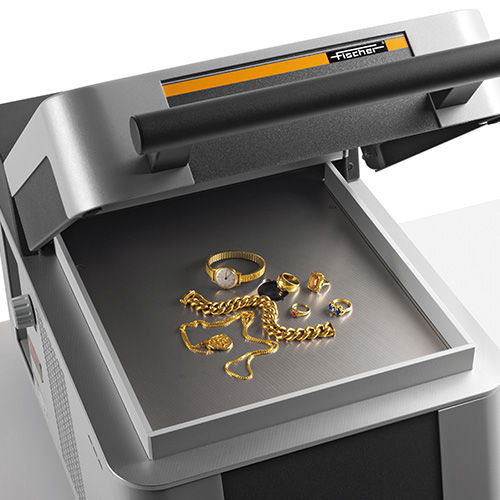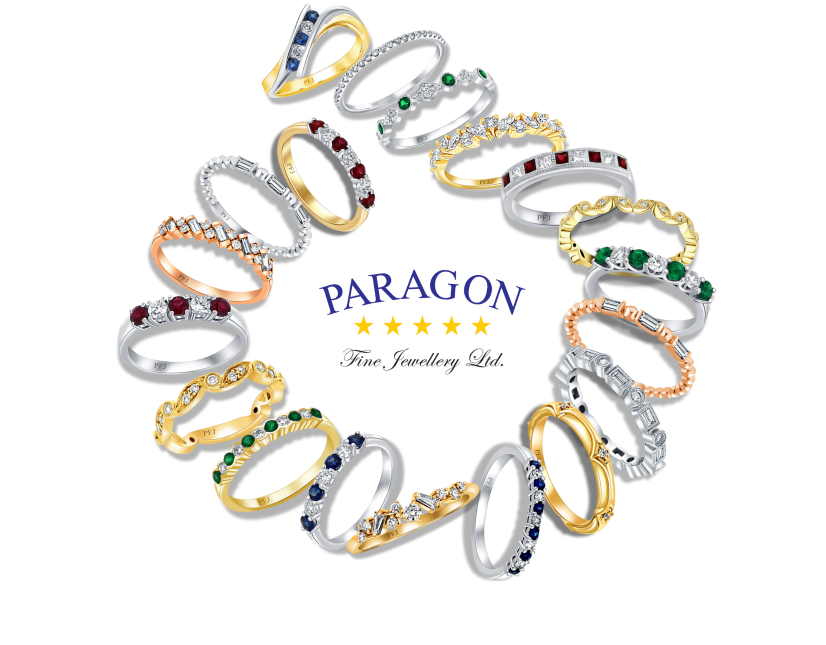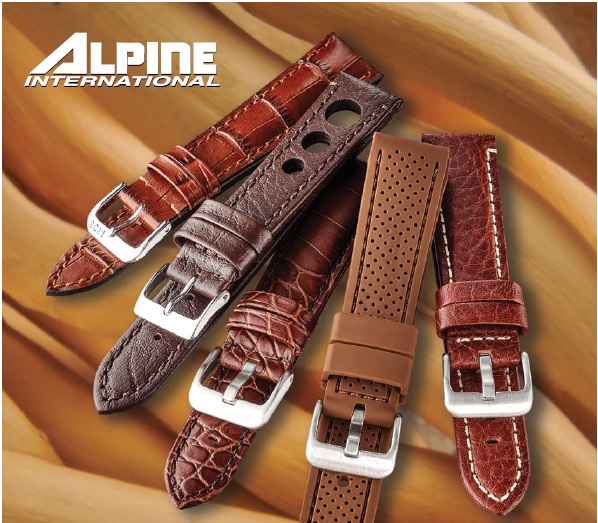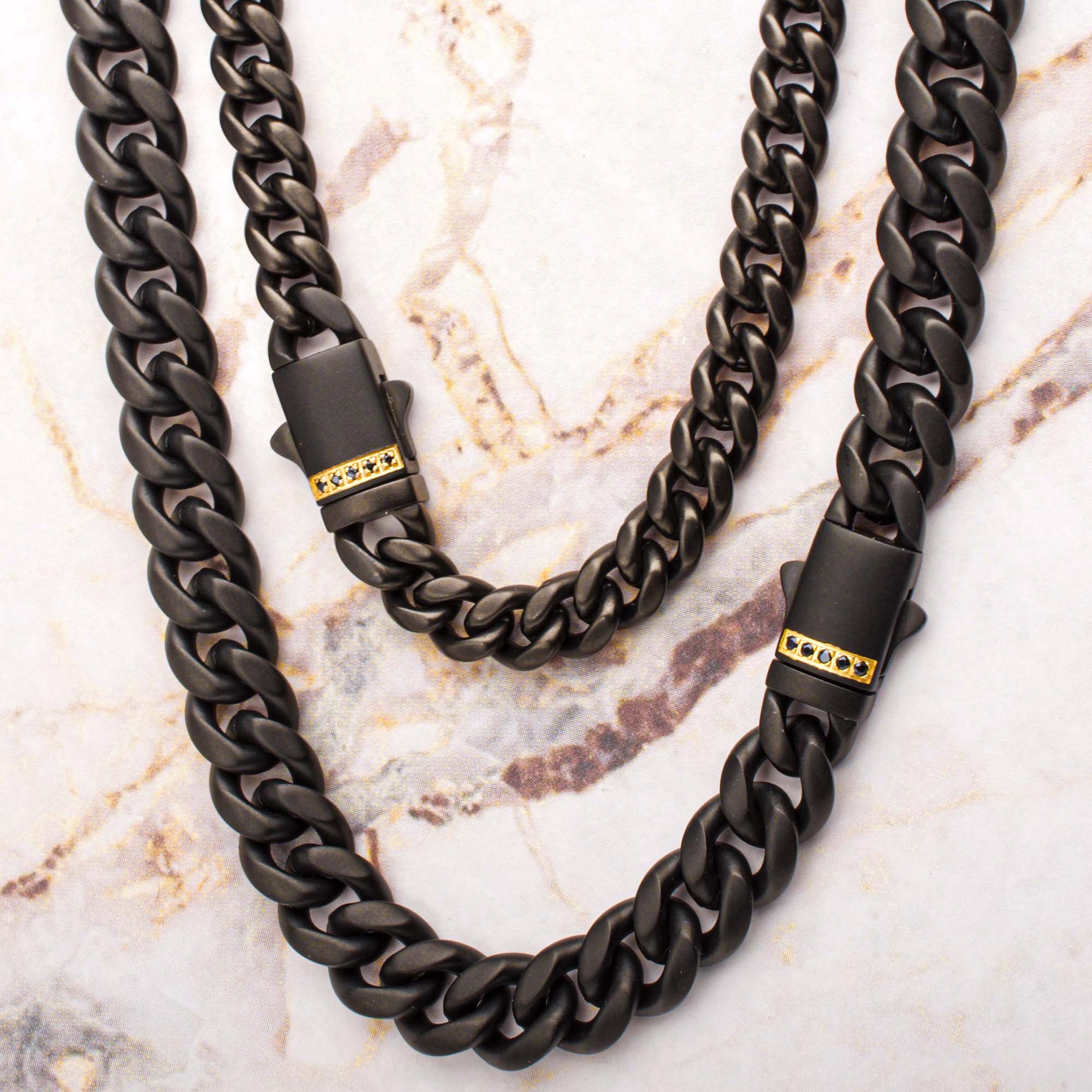The complete guide to Tahitian cultured pearls
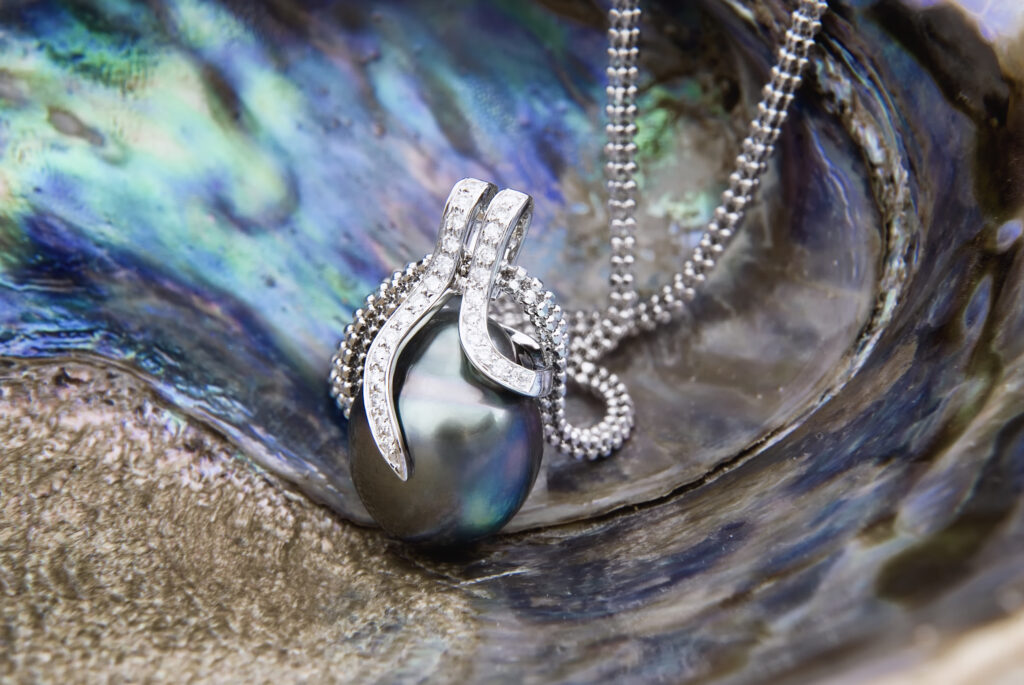
Despite their name, Tahitian pearls are not cultivated in Tahiti. They are grown in the lagoons of other French Polynesian islands and then marketed in Tahiti, the commercial and political hub of French Polynesia. Unlike most other pearls, Tahitian pearls typically have a dark body colour, which is why they are commonly called black pearls. However, they can also be quite colourful and have light colours.
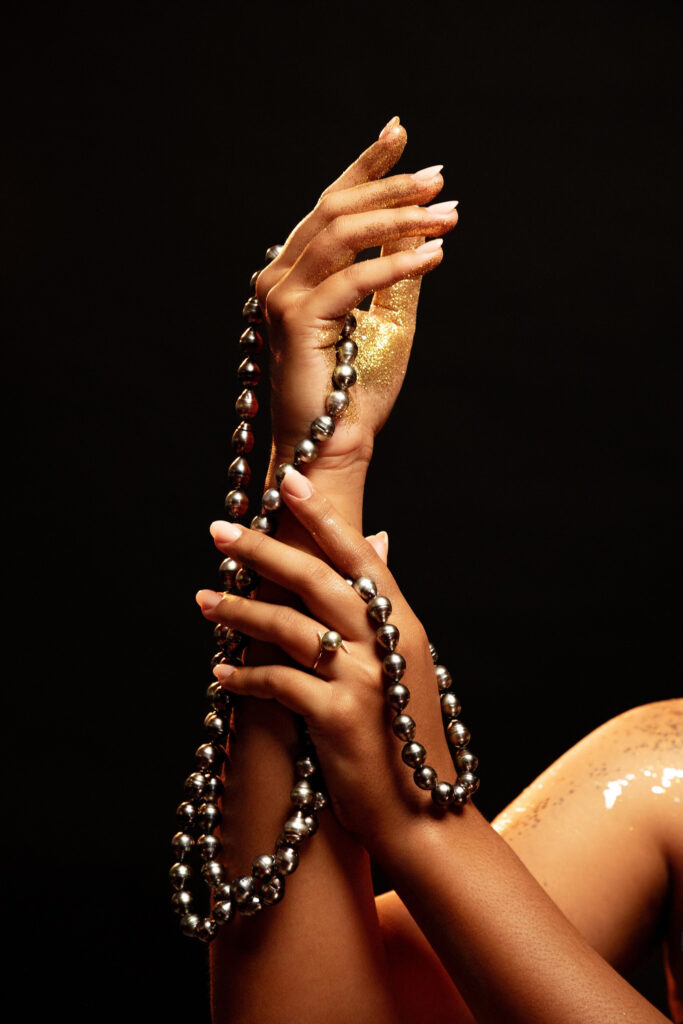
Why are Tahitian cultured pearls dark in colour?
Tahitian pearls are cultivated in the black-lipped Pinctada margaritifera oyster, which can produce darker pearls than white South Sea and Akoya pearl oysters. Oysters vary in their potential to produce certain coloured pearls. Figure 2 shows the dark band of nacre surrounding the white nacre on the interior of the black-lipped shell.
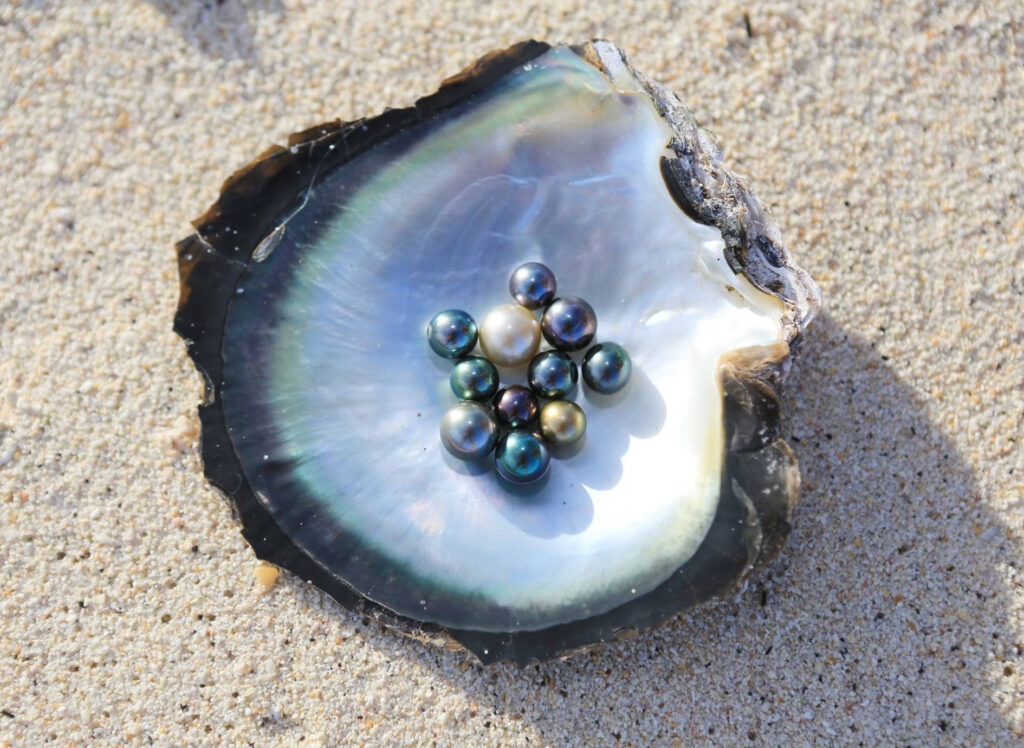
The colour of the donor mantle tissue also helps create the eventual colour of a cultured pearl. The mantle is a tissue that lines the inner shell surface and is responsible for the production of nacre and mother of pearl. A piece of donor mantle tissue must be implanted with or without a bead nucleus in a mollusk in order for a cultured pearl to grow. When Tahitian cultured pearls were first introduced to the market, most had a black-to-grey body colour. Still, mantle tissue grafting experiments led to the creation of Tahitian pearls of different colours (see Figure 3).
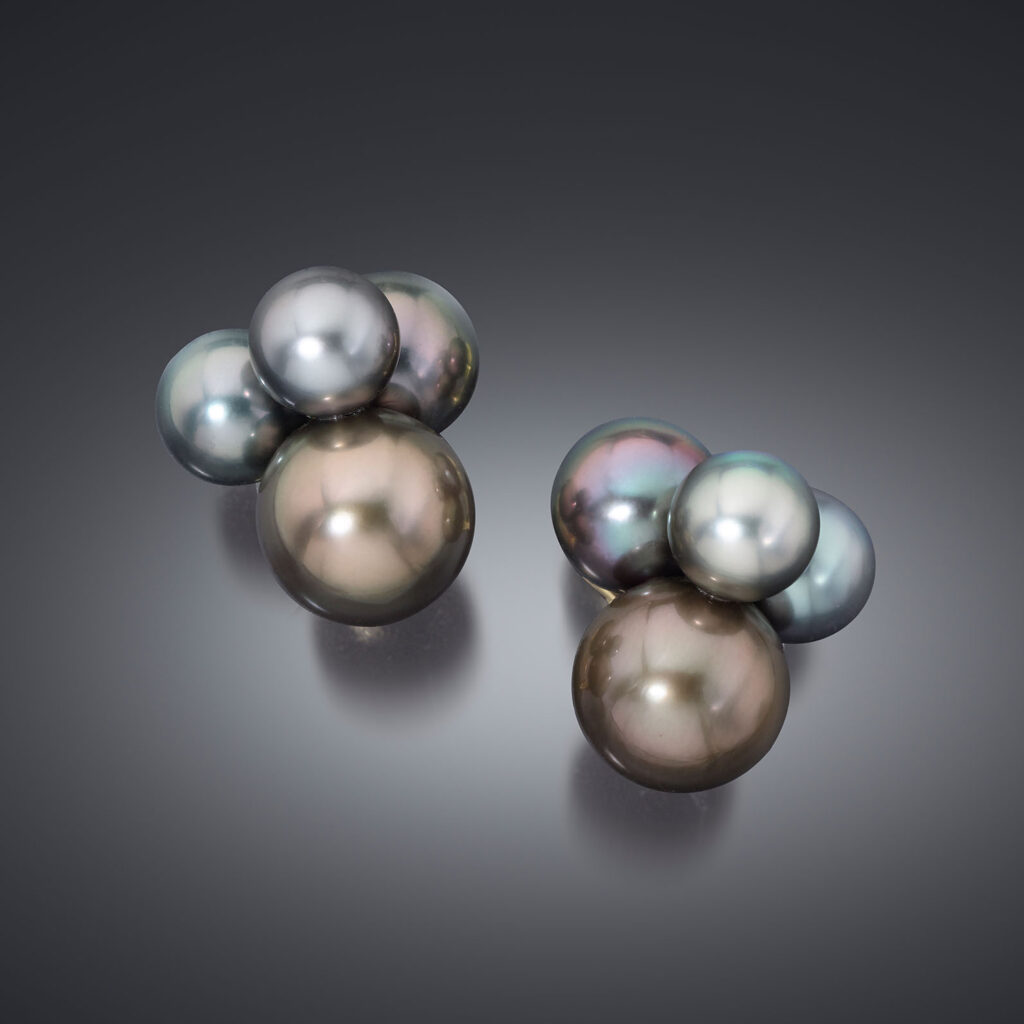
The quality of the nacre is another determinant of pearl colour. Good quality nacre with adequate thickness is required for attractive overtone colours.
History of Tahitian pearl culturing
Tahitian pearl culturing began in the early 1960s after veterinarian Jean-Marie Domand brought in a Japanese specialist who grafted 5,000 black-lipped oysters. By 1965, they had produced more than 1,000 high-quality pearls. Production in French Polynesia increased slowly as several pearl farms were established.
Robert Wan and Jean-Claude Brouillet were two of the early pearling pioneers in Polynesia. Wan sold his first harvest of black pearls to the grandson of Kokichi Mikimoto, founder of the cultured pearl industry. Then, Wan continued to supply the Japanese market with Tahitian cultured pearls.
In the 1970s, New York pearl dealer Salvador Assael partnered with Brouillet to buy several Polynesian pearl farms and oysters. Most jewellers at the time were unfamiliar with Tahitian cultured pearls and suspected they were dyed, so Assael obtained a GIA lab report for a strand. The report identified the pearls as natural-colour cultured pearls. In 1978, Assael showed a new strand of cultured Tahitian pearls to New York, N.Y., jeweller Harry Winston and asked him to sell it. Winston sold the strand within a week and quickly sold the remaining fine pearls of the harvest. This inspired Assael to promote the pearls to high-end jewellers such as Bulgari, Cartier, Tiffany & Co., and Van Cleef & Arpels. Soon Tahitian cultured pearls became so highly valued that one strand sold for US$500,000.
A Polynesian pearl rush ensued in the 1980s, and many new farms appeared. Robert Wan became the largest producer of Tahitian cultured pearls after buying Brouillet’s pearl farms.
Price factors
Lustre
The higher the lustre, the more valuable the pearl. The best Tahitian cultured pearls are very reflective, whereas low-lustre pearls show dull, fuzzy reflections. Lustre is generally regarded as the most important pearl value factor.
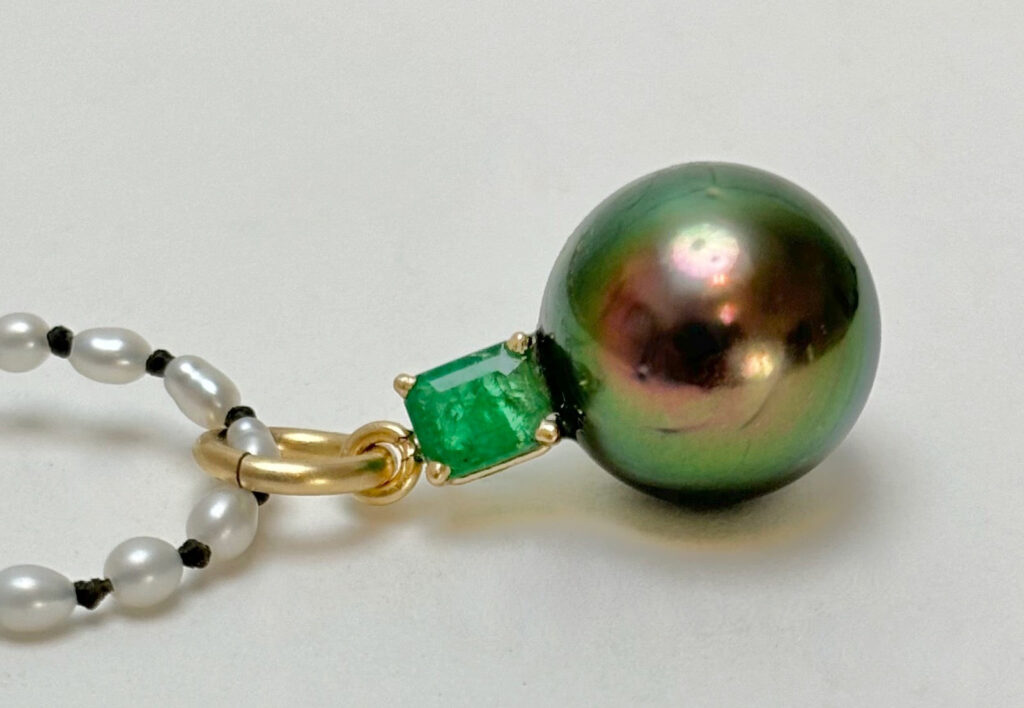
Colour
Dark, intense colours are highly prized. Most pearls from the Tahitian pearl oyster have a black to light-grey body colour, but the colour can also be brown, green, blue, pink, purple, or, in rare cases, white. Their overtones, when present, tend to be green, pink, purple or blue. Green Tahitian pearls with a pink overtone, like the pearl in Figure 4, are described as peacock-coloured pearls and command high prices.
All pearls sold in French Polynesia are of natural colour, but after they have been exported from Tahiti, they may undergo treatments. The chocolate-coloured pearl in Figure 5 is an example of a colour-enhanced Tahitian cultured pearl. Freshwater and Akoya cultured pearls are often dyed and sometimes misrepresented as Tahitian pearls and sold at bargain prices online.
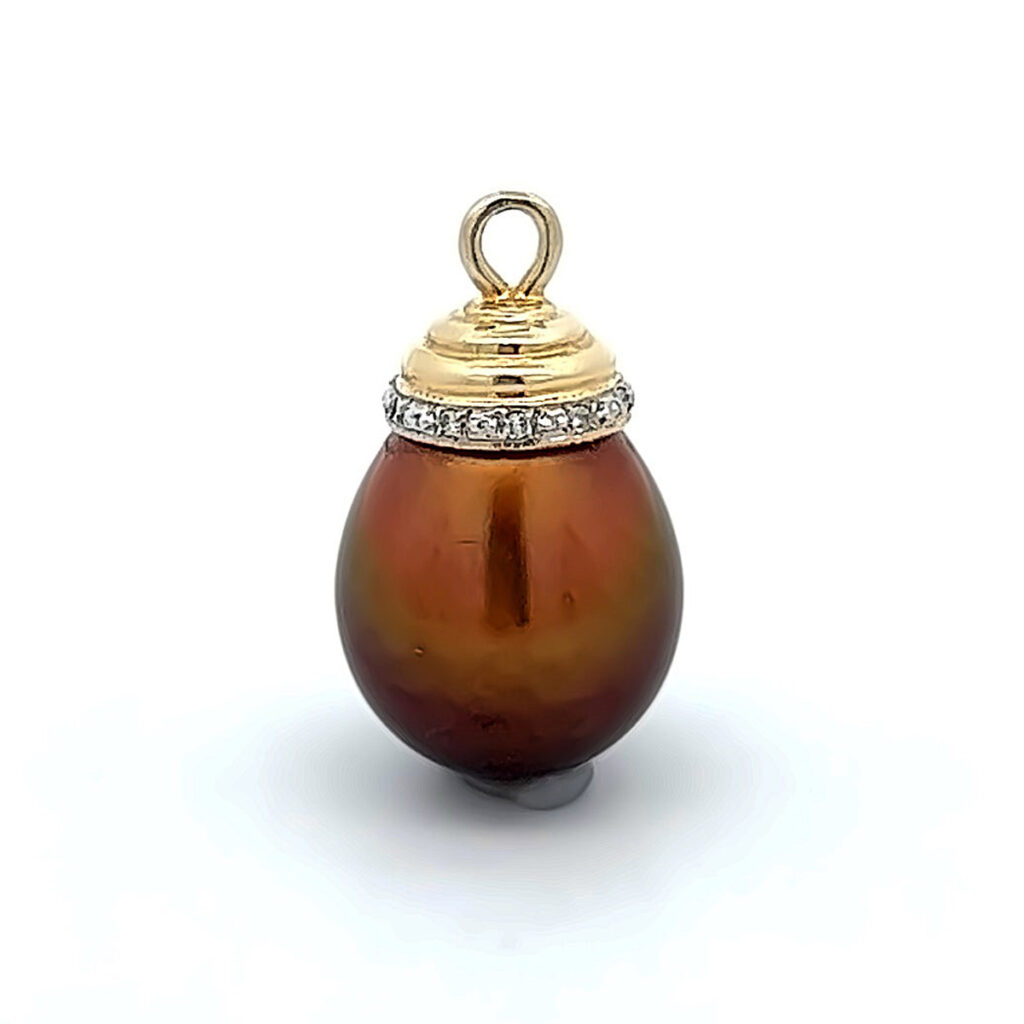
Surface quality
The surfaces of the most expensive Tahitian pearls are free of noticeable blemishes such as pits, bumps, and grooves. The more blemishes on pearls, the lower their price. However, that can be an advantage, especially if pearls can be mounted in a way that hides their imperfections. Blemishes on single pearls tend to be more obvious than those in strands. It is normal for pearl strands to have some flaws.
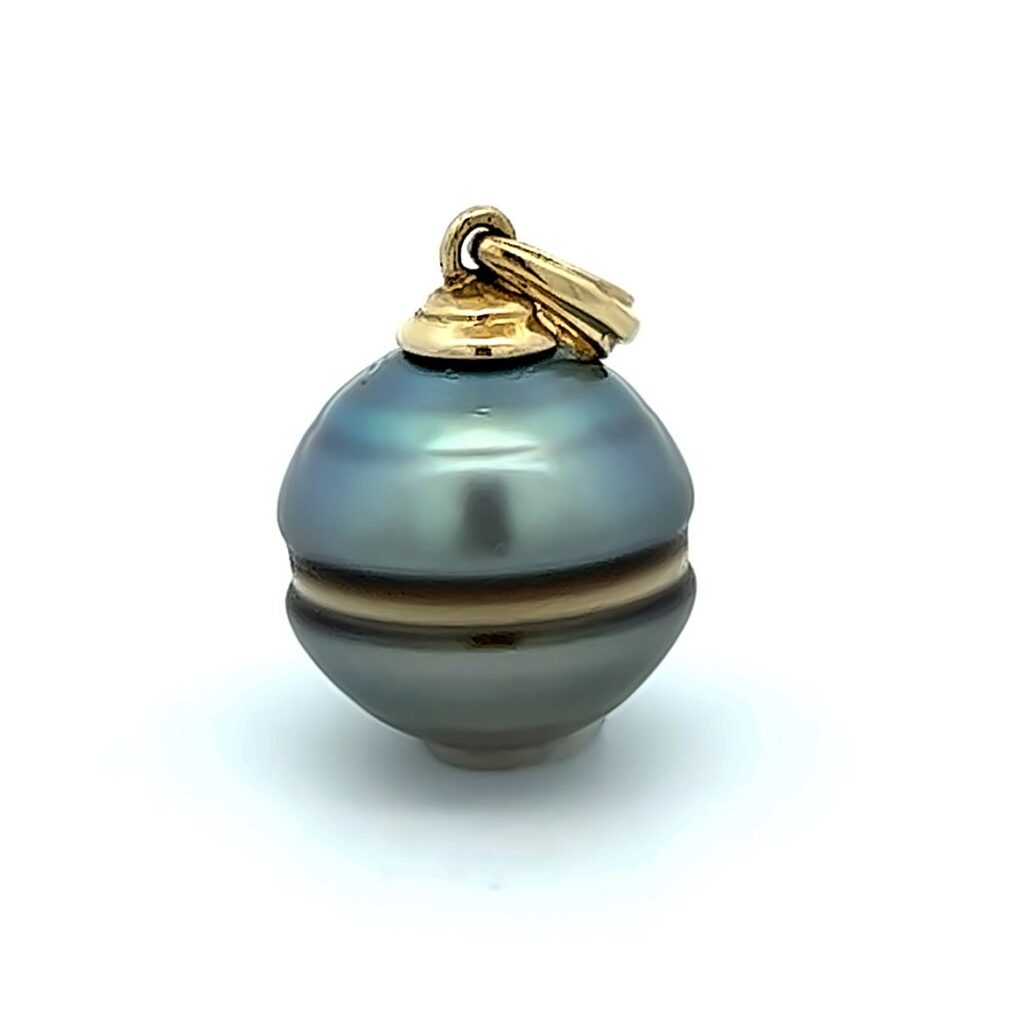
Shape
Round and near-round shapes are the most expensive. Drop shapes are the next most expensive, followed by button shapes, which look flattened. Baroque shapes and circled pearls with grooved ring-like formations around them, like the one in Figure 6, are the least expensive. The more symmetrical the shape, the higher its value.
If an oyster rejects a bead nucleus during pearl culturing, a beadless pearl can form from the mantle tissue that was inserted with the pearl nucleus. The resulting pearl usually has a baroque shape and is called a Keshi cultured pearl or simply a Keshi. Tahitian Keshis have a rustic look that is ideal for men’s necklaces, like the one in Figure 7.
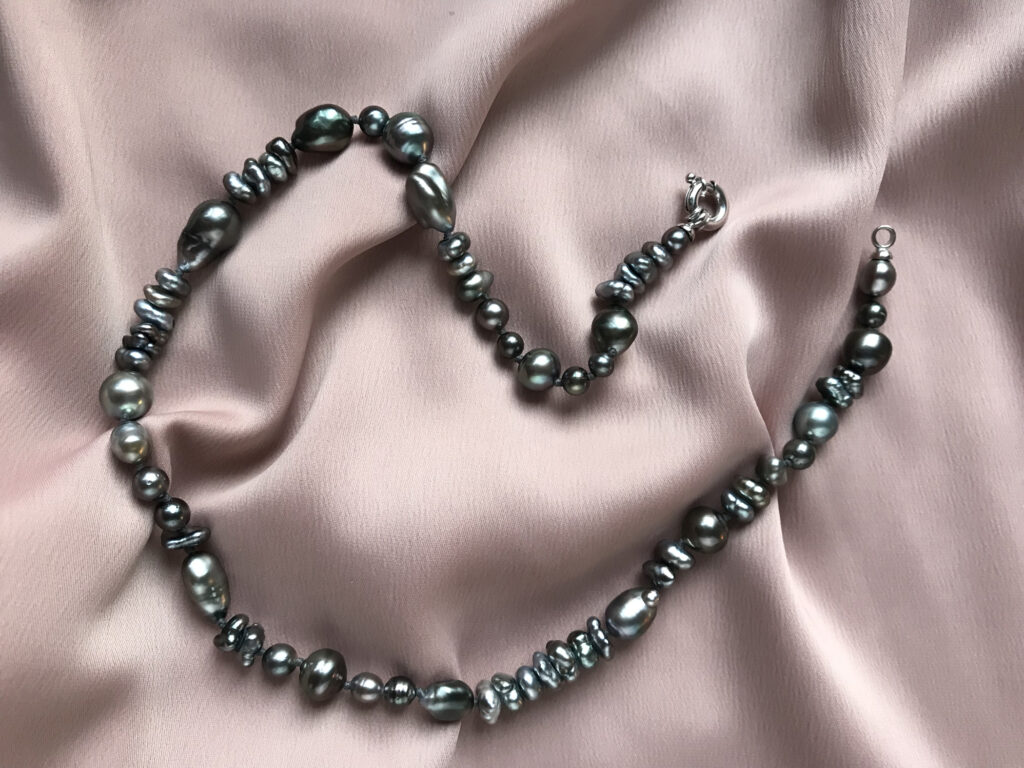
Size
The larger the pearl, the more it is valued, provided all other factors are equal. The average size range for Tahitian pearls is about 8 to 13 mm, but some are as small as 6 mm. The largest recorded round pearl is 26 mm in diameter—it can be found in the Robert Wan Pearl Museum in Papeete, Tahiti. Some baroque Tahitian pearls may reach 30 mm in length.
Nacre thickness
The Tahitian government used to impose a minimum nacre thickness on all exported pearls of 0.8 mm, the depth expected from at least 18 months of growth. However, that requirement was dropped in 2017. The best way to make sure your pearls have an adequate nacre thickness is to deal with reliable sellers and choose pearls with good lustre.
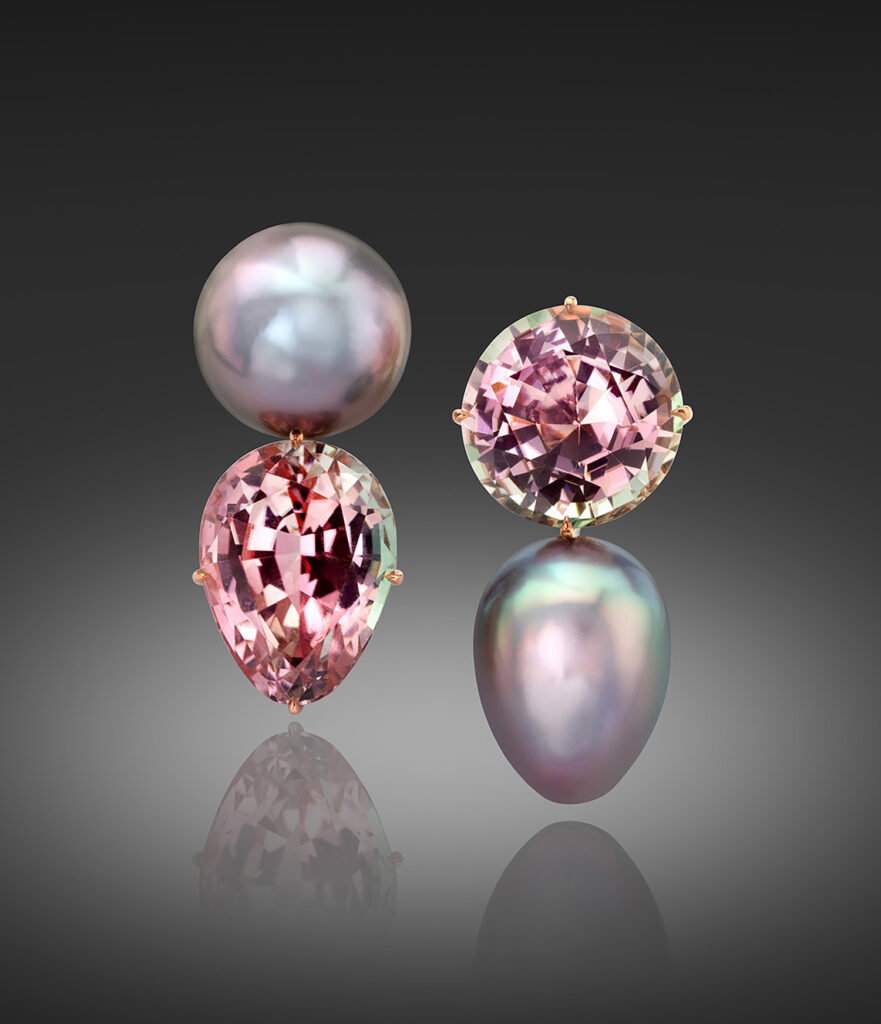
Matching
Matching is a consideration for necklaces, earrings, and bracelets. Well-matched pearl strands command the highest prices. Finding perfectly matched Tahitian pearls may take years, especially for necklaces and bracelets. However, mismatched earrings or multicoloured pearl necklaces and bracelets can look very attractive and have become quite popular in recent years.
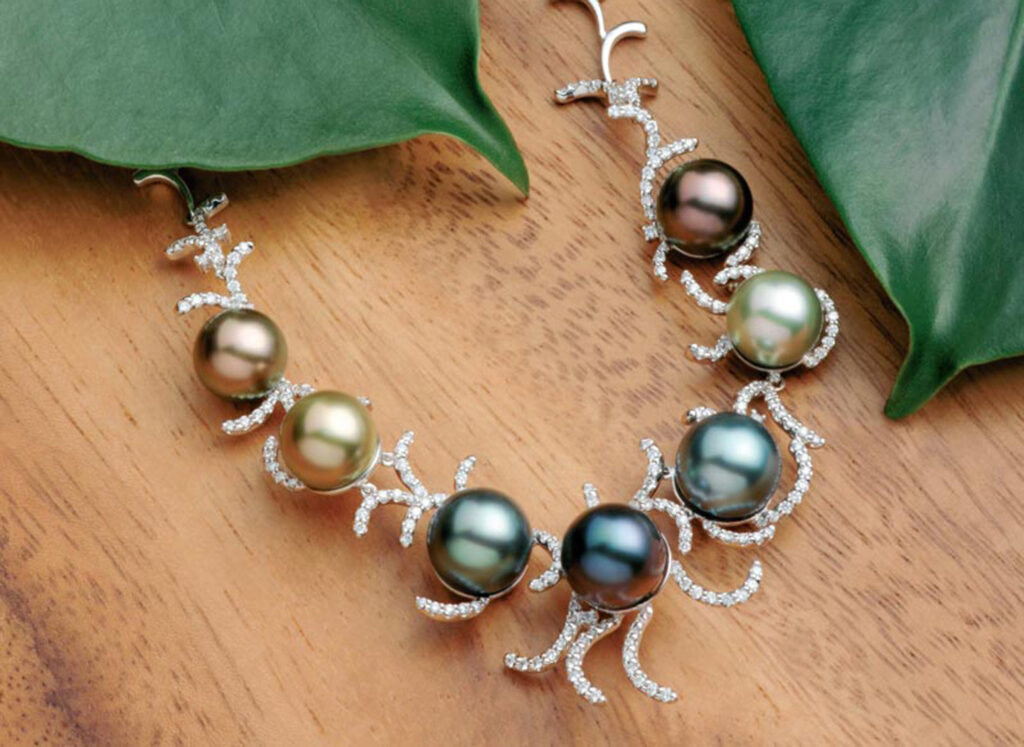
The allure of Tahitian pearls
Tahitian pearls offer unlimited design opportunities. Assael set a round and pear-shaped bicolour tourmaline in unique reverse earrings, accompanied by two Tahitian pearls of similar colour and shape, as illustrated in Figure 8. Tahia Pearls was able to design the colourful necklace in Figure 9 thanks to the diverse colours of Tahitian cultured pearls, which can complement any skin tone. Brenda Smith was able to create an illusion of larger size by reflecting a black pearl in 18K white gold settings, as seen in the cufflinks in Figure 10.
Tahitian pearls can grow quite large, allowing even single pearl pendants to have an impressive visual impact. If you appreciate eye-catching pieces and would like to capture the exotic beauty of French Polynesia, Tahitian pearl jewellery is an ideal choice for you.
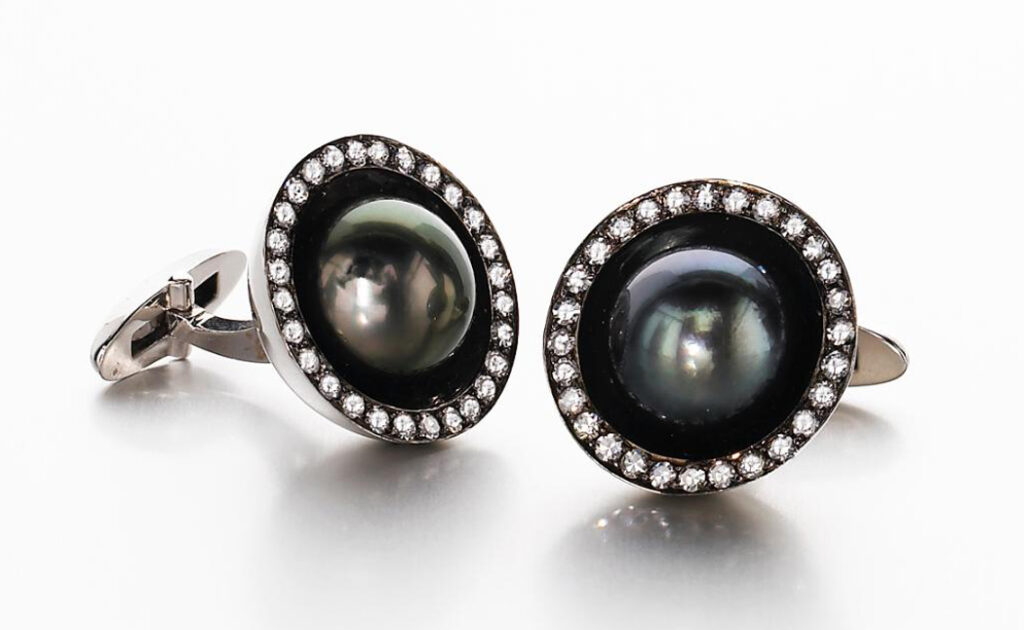
Renée Newman, GG, is a gemmologist, speaker and the author of the Pearl Buying Guide and 13 other books on jewellery and gems. She became interested in pearls while conducting tours to Asia, Tahiti, and Australia and while working at a wholesale diamond and pearl firm in downtown Los Angeles. In the fall of 2025, Firefly Books will release her latest book, Pearls: Their History, Sources, Types and Qualities. For more information about Newman and her books, visit ReneeNewman.com.


